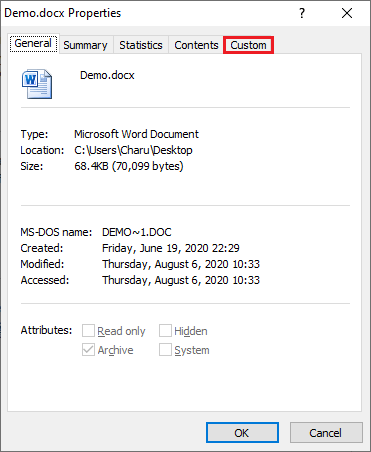

#Add document properties word 2013 install
When you have located the DocX package, click Install: Install DocX using the Nuget Package Manager GUI in VS Solution Explorer: Right-click on the Solution, select “Manager Nuget Packages for Solution,” and type “DocX in the search box (make sure you have selected “Online” in the left-hand menu).
#Add document properties word 2013 full
Best of all, DocX does not require that Word or any other Office dependencies be installed on the client machine! The full source is available from Coffey’s Codeplex repo, or you can add DocX to your project using Nuget. docx format, introduced as of Word 2007). Thankfully, the open source DocX library by Cathal Coffey solves both problems nicely, and unlike Interop, presents an easy-to-use, highly discoverable API for performing myriad manipulations/extractions against the Word document format (the. Dealing with all that Interop nastiness makes this more painful than it needs to be. Often times though, we don’t so much need to automate the office application directly so much as get at the contents of Office file (such as Word or Excel files). If you need to automate MS Office applications, Interop (or going all the way down to the COM level) is pretty much the only way to do it, and obviously, you need to have Office installed on the client machine for it to work at all. Interop is essentially a giant wrapper around the ugliness that is COM, and the abstraction layer is thin indeed. Additionally, my understanding is that there are issues with doing Word automation on the server side. To get almost anything done with Word (including simply pulling the text out of the document, you pretty much need to use Interop, which also means you have to have Word installed on the local machine which is consuming your application. The big pain point in working with MS Word documents programmatically is. In that post, I also mentioned a fantastic library for working with Word docs as well, and promised to discuss it in my next post.

In a recent post, I extolled the virtues of a wonderful OSS library I had found for working with Excel data programmatically, LinqToExcel.


 0 kommentar(er)
0 kommentar(er)
